What is Kazahaya no Sato? We will introduce you to the highlights and parking lots within the park where you can enjoy seasonal flowers.
掲載日:2022.06.27
Do you know “Kazahaya no Sato”? It was established in 2004 as the first flower garden in Japan to incorporate ``horticultural welfare.'' In this article, we will introduce the origin of the Kazahaya no Sato facility's name, as well as the seasonal flower highlights where you can enjoy hydrangeas, plums, and wisteria from early spring to summer, recommended spots within the park, and parking spots. We will introduce you to the parking lot, so please use it as a reference!
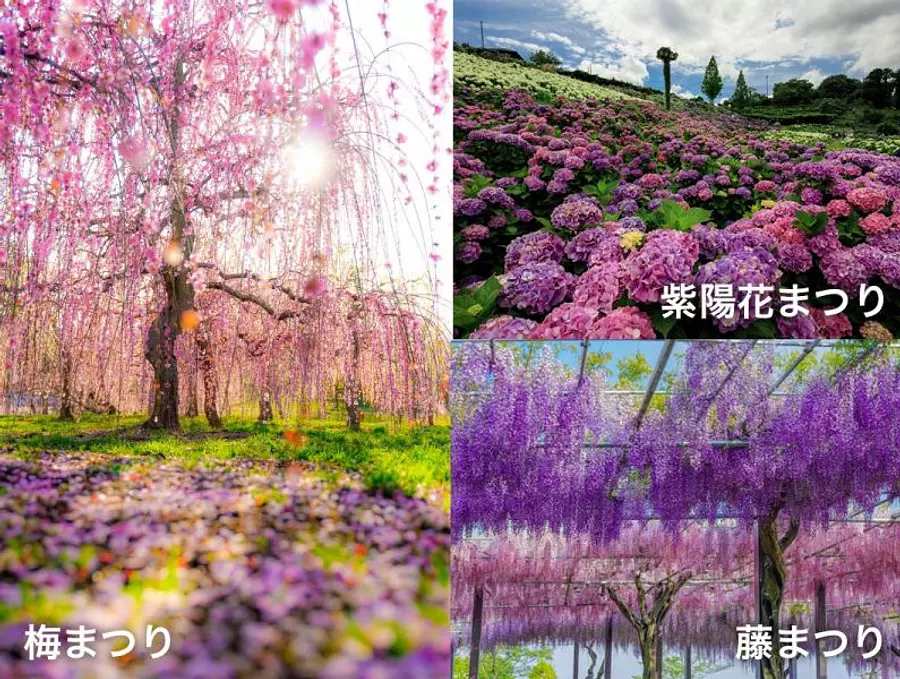
▼Table of contents
- What is “Kazahaya no Sato”?
- About “Kazahaya no Sato” parking lot and fees
- Highlights of hydrangeas at Kazahaya no Sato (early June to late July)
- Highlights of the plum blossoms at Kazahaya no Sato (early February to late March)
- Highlights of wisteria at Kazahaya no Sato (late April to early May)
- How to know the flowering status of “Kazahaya no Sato”
- Recommended spots in Kazahaya no Sato park
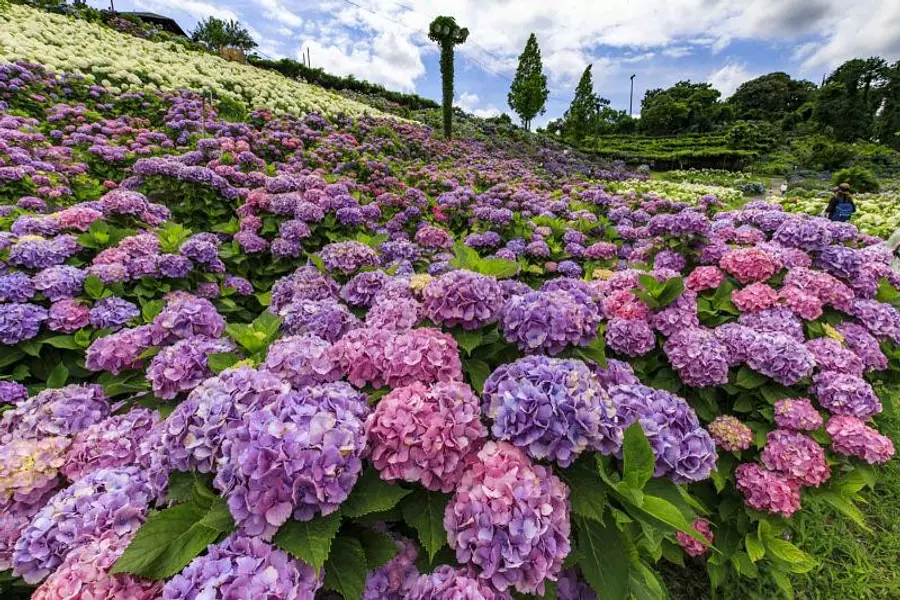
What is “Kazahaya no Sato”?
Kazahaya no Sato, the hometown of kappa, is located in TsuCity, Mie hekicho, and is less than 10 minutes by car from Hisai IC. It is located on the banks of Kazehaya Pond, which has a circumference of 3.8 km, and within the ``Ise Onsen Golf Club'', a hilly area of approximately 78,000 square meters.
It is operated by the social welfare corporation ``Shojukai''. As the first flower garden in Japan to incorporate ``horticultural welfare'', we are working on the fusion of welfare and the environment, and people with disabilities and facility staff worked together to create ``77,700 hydrangeas, 555 plum trees, and 1,800 wisteria trees. ” (as of June 26, 2022).
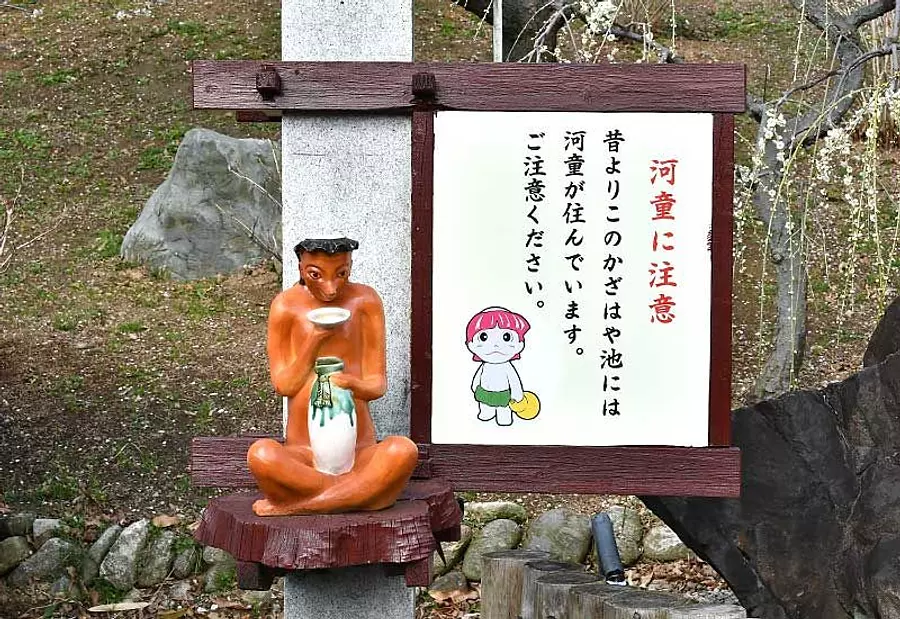
The name of the facility, ``Kazahaya no Sato,'' comes from ``Kazahaya Pond'' located on the premises. By the way, this Kazuhaya Pond is one of 800 irrigation ponds built across the country by Emperor Suinin in 35 AD. During the Sengoku period, the lord of the Tsushiro domain, TakatoraTodo, named the land on which he did irrigation work "Kazehaya," hence the name "Kazehaya Pond," and today it is said to be one of the prefecture's leading water sources for rice fields. thing.
It is said that the reason why it is said to be the hometown of kappa is because the kappa who lived in the nearby kumozu moved to Kazehaya Pond.
About “Kazahaya no Sato” parking lot and fees
There are a total of three parking lots at Kazahaya no Sato, and the third parking lot, located around Kazahaya Pond, is open only on Saturdays and Sundays.
かざはやの里へは通行不可区間があります。
— 福祉と環境を融合した花園「かざはやの里」~かっぱのふるさと~ (@kazahayanosato) June 12, 2022
地域住民にご迷惑のかからないようお願いします。
入園締切18:30退園はご自由に~#夕焼けのあじさいでまったりと#三重県 #津市 #かざはやの里 #かざはの里DogLand #あじさいの名所 #あじさいまつり #kankomie #visitmie #vistmie_tw #じゃらん #はなまっぷ pic.twitter.com/O6ms2Kd9nd
On Kazahaya no Sato's official Twitter account, a ``no-passage zone'' has been announced, and people are advised not to use the road that leads to the residential area of TsuCity hekicho.
From June 11th (Saturday) to June 12th (Sunday), 2022, passageways in residential areas were severely congested, and residents were temporarily unable to return home. Therefore, if there is a traffic jam locally, please wait a while and head back there.
Security guards will be stationed on Saturdays and Sundays from June 18, 2022 until the end of the Hydrangea Festival, so please follow their instructions when moving your car.
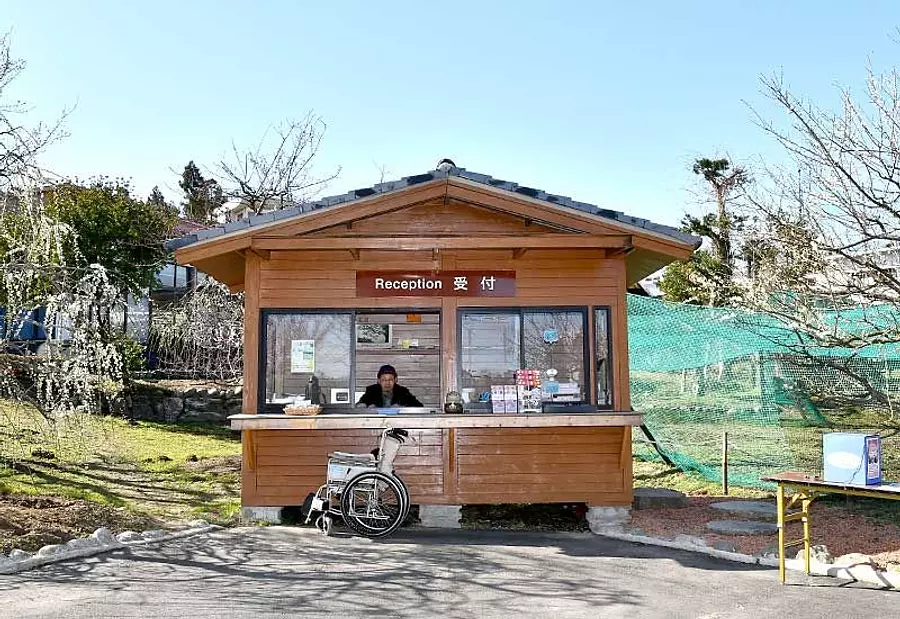
At the reception desk, pay the admission fee of 800 yen per person (free for high school students and younger and those with a disability certificate) and head to the main plaza. The receptionist welcomed us with a smile.
Now that we have successfully entered the park, we will introduce the hydrangeas, plums, and wisteria of Kazahaya no Sato in detail, along with photos of the spectacular views.
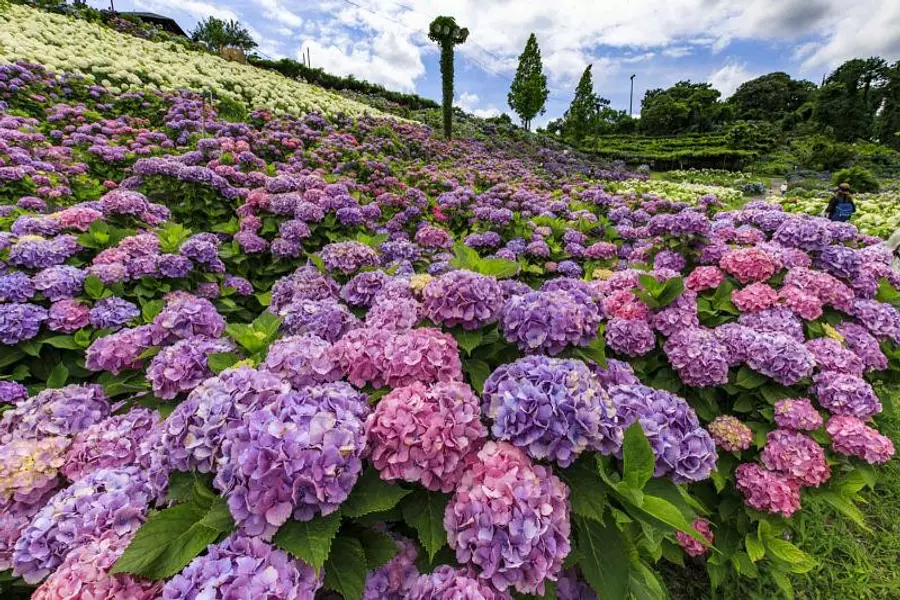
Highlights of hydrangeas at Kazahaya no Sato (early June to late July)
The hydrangeas of Kazahaya no Sato include varieties that can only be seen here, such as ``Selma'', ``Sharona'', ``Selina'', ``Sandra'', ``Sabrina'', and ``Soraya'', as well as ``Ao Temari'', ``Sumida no Hanabi'', and ``Sumida no Hanabi''. 77,700 hydrangea plants spread over 33,000 square meters on a large slope and a flower bed designed with 37 types of hydrangeas, including marine blue, ``kasularin pink,'' ``uzu,'' ``white forehead,'' ``seven-tiered flower,'' ``juni-hitoe,'' ``princess hydrangea,'' and ``Annabelle.'' The flowers change color from early June to late July.
About the best time to see hydrangeas
Around the end of May, the ``frame flowers'' begin to change color, and around mid-June, the color of all varieties becomes ``beautiful.'' After the ``true flowers'' bloom, the forehead flowers turn ``shabby chic'' (turning from iridescent to brown). It will be.
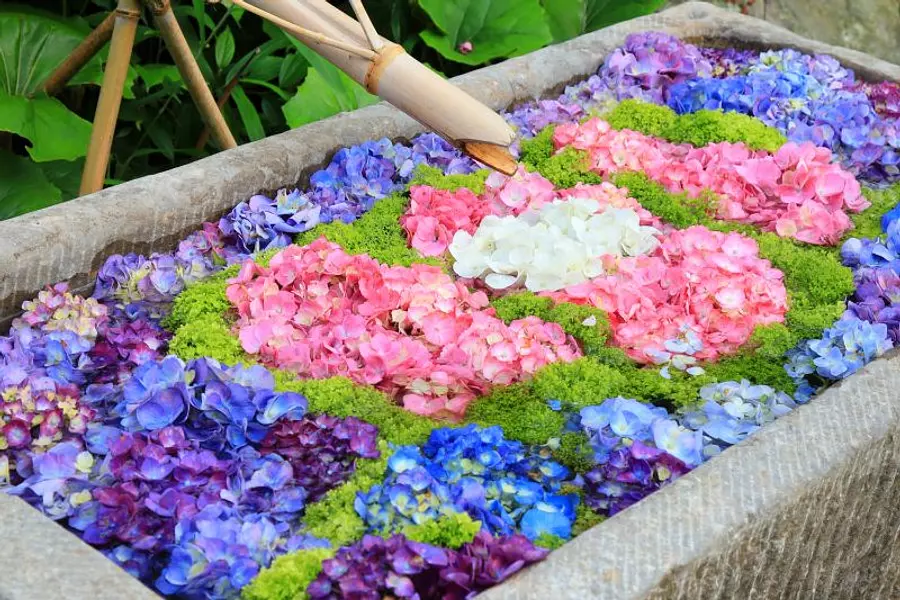
There is Hanachozu just beyond the reception in the park. The flowers and designs of Hanachozu are changed regularly, showing a variety of patterns.
Hanachozu that was unveiled on June 9, 2022 was a pumpkin carriage drawn with hydrangeas. It's colorful and very beautiful.
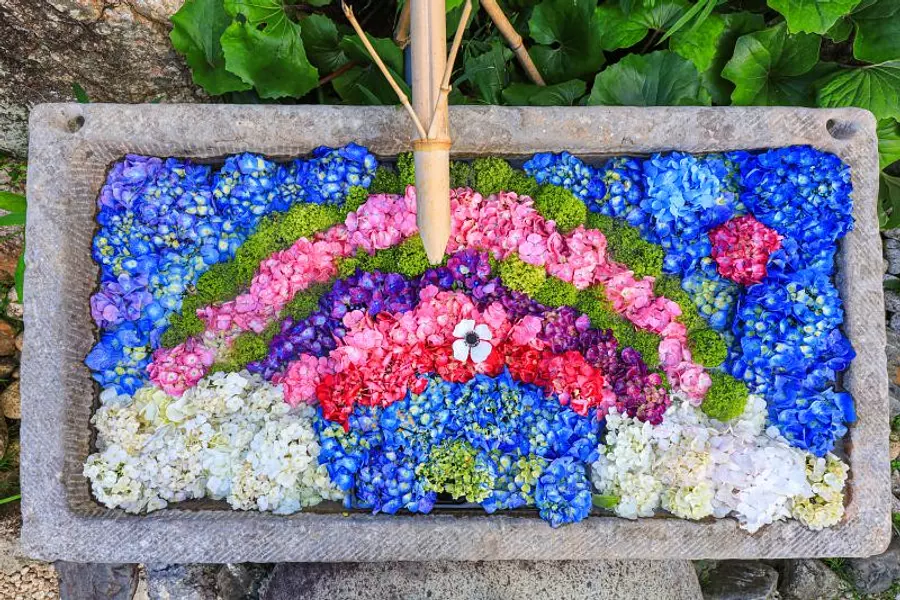
On June 12, 2022, a rainbow will be depicted with hydrangeas. During the plum and wisteria season, beautiful Hanachozu using these flowers will be performed, so I look forward to it every time I visit.
In addition to these, we introduce other Hanachozu in Mie Prefecture in this article, so be sure to check it out♪
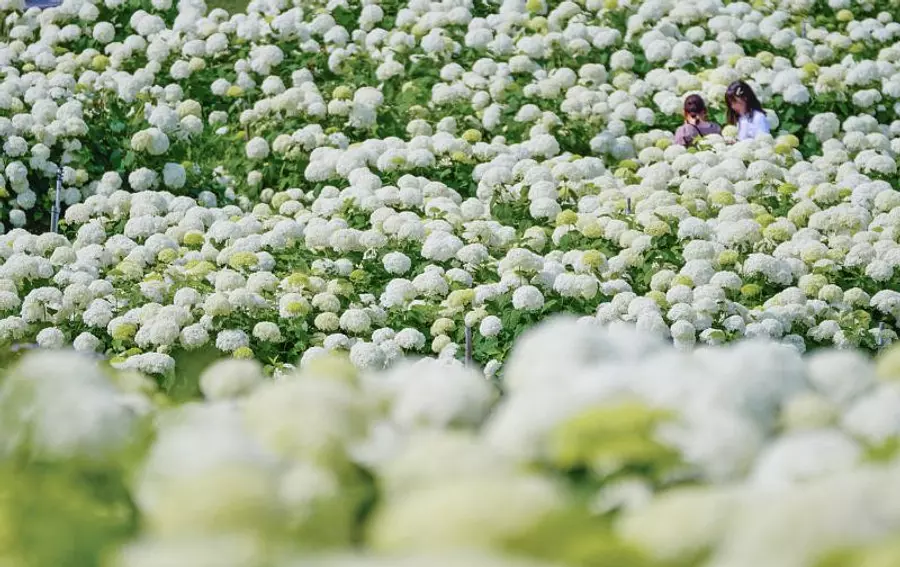
Annabelle, a white hydrangea, blooms about a week later than other colored hydrangeas.
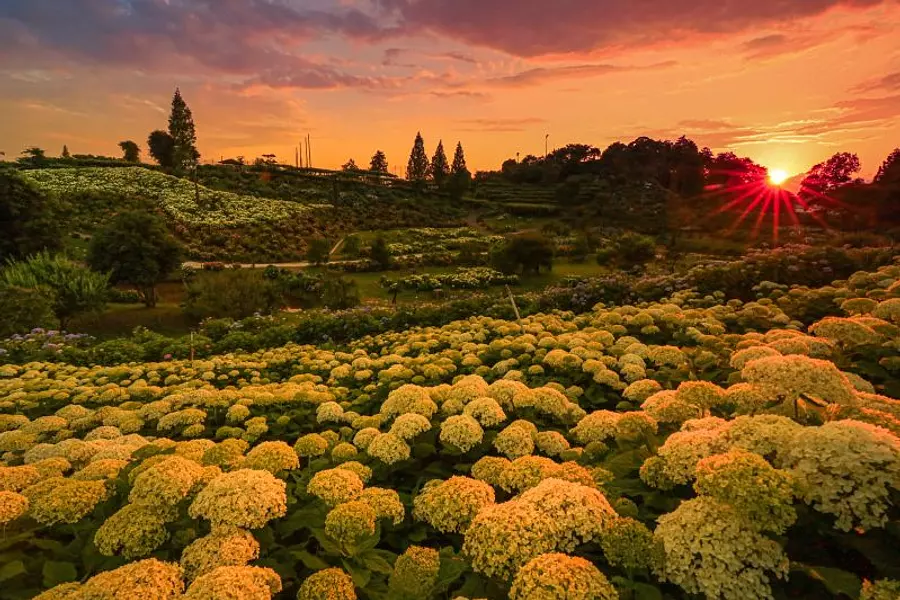
Kazahaya no Sato is one of the largest in the Tokai area, and is the reason why you can take photos of the combination of sunset and hydrangeas.
As of 2022, you can leave the park at any time if you enter by 6:30 pm, giving you a chance to see a fantastic scene of sunset and hydrangeas!
In addition to this, there are many other spectacular views of hydrangeas! Mie Travel Camera Club Fugamaru-chan and Chamu are introducing tips and recommended photo spots for taking beautiful pictures of hydrangeas at Kazahaya no Sato, so please refer to them as well!
Highlights of the plum blossoms at Kazahaya no Sato (early February to late March)
Plum blossoms are known as the earliest flower of the year, and are also known as ``hyakkasakigake.'' At Kazahaya no Sato, you can stroll through the plum trees while listening to the cries of pheasants, white-eyes, and warblers.
Plum blossoms, which bloom beautifully in snowy landscapes and cold skies, are considered to be auspicious flowers because of their strong vitality, and have long been valued as New Year's decorations.
As Sei Shonagon wrote in ``The Pillow Book'', ``The flowers on the tree are both red and plum, both dark and light.'' Until the mid-Heian period, in the mid-9th century, when people spoke of ``flowers,'' they were referring to plum blossoms, not cherry blossoms. ``Plum'' was the main character among flowers.
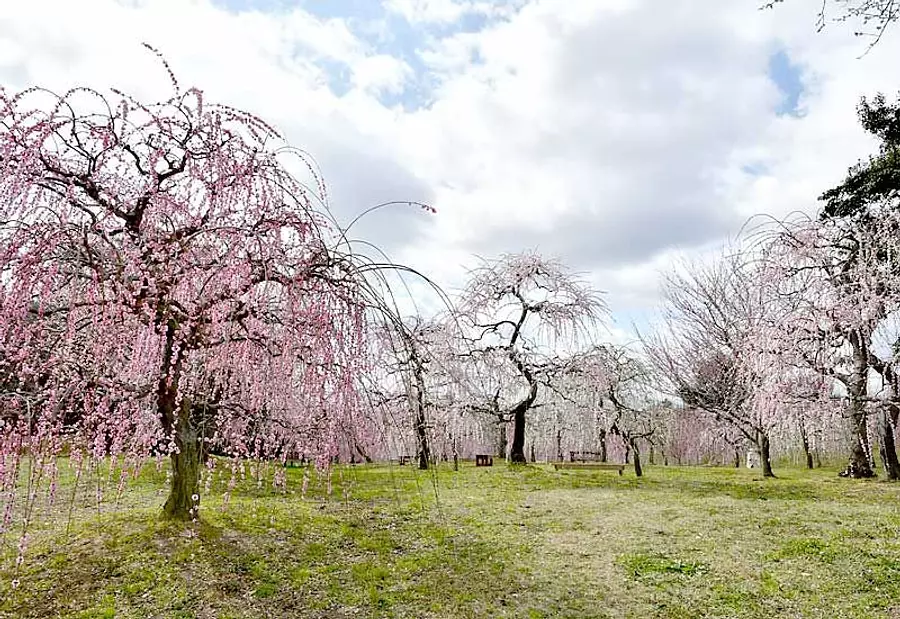
This is the red and white weeping plum tree in the main square. Weeping plums are connected trees, so it seems that when planting the trees, the base trees were carefully considered to ensure a good balance of red and white. Red and white weeping plums and blue sky. This is definitely an Instagram-worthy item.
In addition, the plums of Kazahaya no Sato are ``Kan Kobai'', ``Michirube'', ``Shirakaga'', ``Kagoshima Kobai'', ``Beni Chidori'', ``Nikko plum'', ``Kotsuru'', ``Bungo plum'', ``Minato Kobai'', and ``Koume''. 555 trees of 65 varieties, including ``Nankoume'', ``Omimamama'', and ``Hinkoume'' bloom in a 25,000 square meter carpet of green grass from early February to late March.
555 plum trees on the grass carpet. I forgot that I was on a golf course, and as I looked at the cute red and white plum blossoms while being surrounded by the scent of plums in a structure reminiscent of a Japanese garden, I felt like I could understand the feelings of the aristocrats of old. By the way, during the hydrangea season, plums harvested from real plums are also sold.
Click here if you would like to know more about the plum blossoms of Kazahaya no Sato.
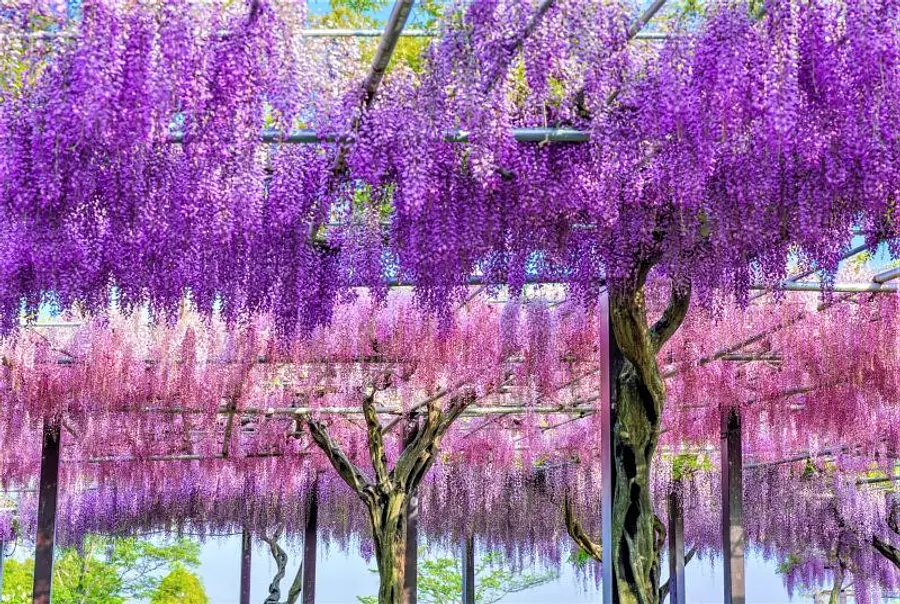
Highlights of wisteria at Kazahaya no Sato (late April to early May)
The wisteria types are ``White Ko Hitan Wisteria'', ``Shiko Hitan Wisteria'', ``Red Wisteria'', ``Lipstick Wisteria'', ``Rokushaku Wisteria'', ``Nine Shaku Wisteria'', ``Nagasaki One-Year-Old Wisteria'', ``Yaekuro Ryu Wisteria'', ``Black Ryu Wisteria'', and ``White Noda Wisteria''. 1,800 wisteria trees of 10 types bloom from late April to early May on the 10 types of wisteria trellis covering 10,000 m2 and standing trees in the 58,000 m2 park.
The photo above shows a very large wisteria trellis in the park. (The photo was taken during the peak viewing period)
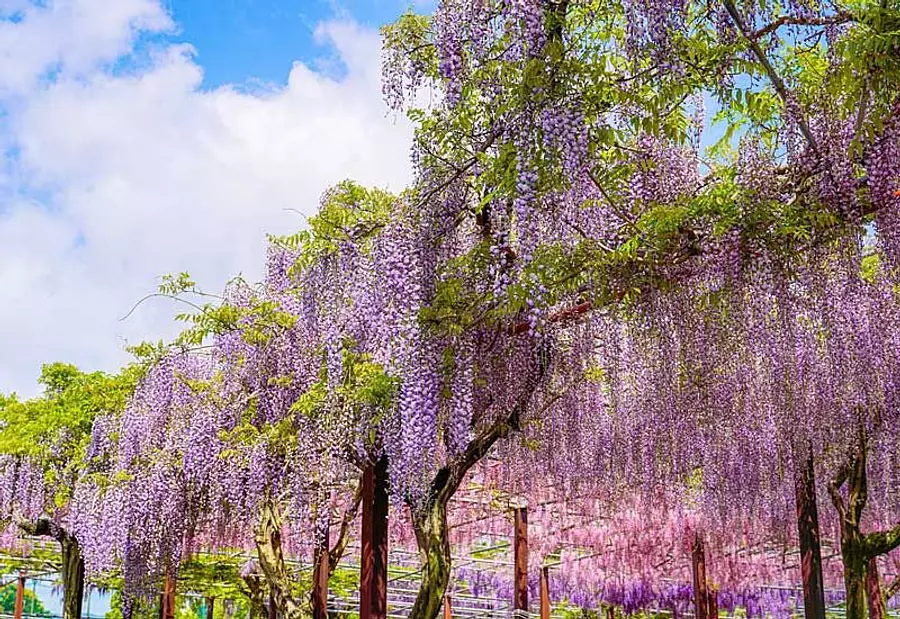
There are 9 wisteria trellis of various shapes on the 10,000 m² site.
It is the largest wisteria trellis I have ever seen, and the best time to see it is from April to May, when it is in full bloom as shown in the photo, creating a spectacular view.
How to know the flowering status of “Kazahaya no Sato”
You can see the current flowering status with photos on Kazahayanosato's official Twitter, Instagram, and Facebook pages. As the best time to view approaches, the blooming status will be updated every morning, so be sure to check it out♪
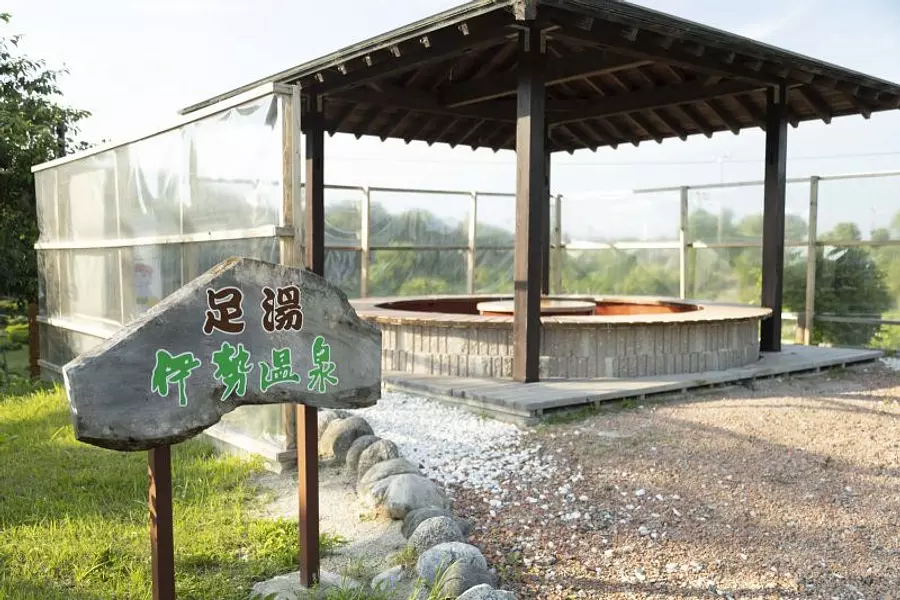
Recommended spots in Kazahaya no Sato park
After walking around the park, relax in the free footbath. Your body will be healed♪ Don't worry if you forget your towel! We sell Kazahaya no Sato original towels for 100 yen each, so you don't have to worry.
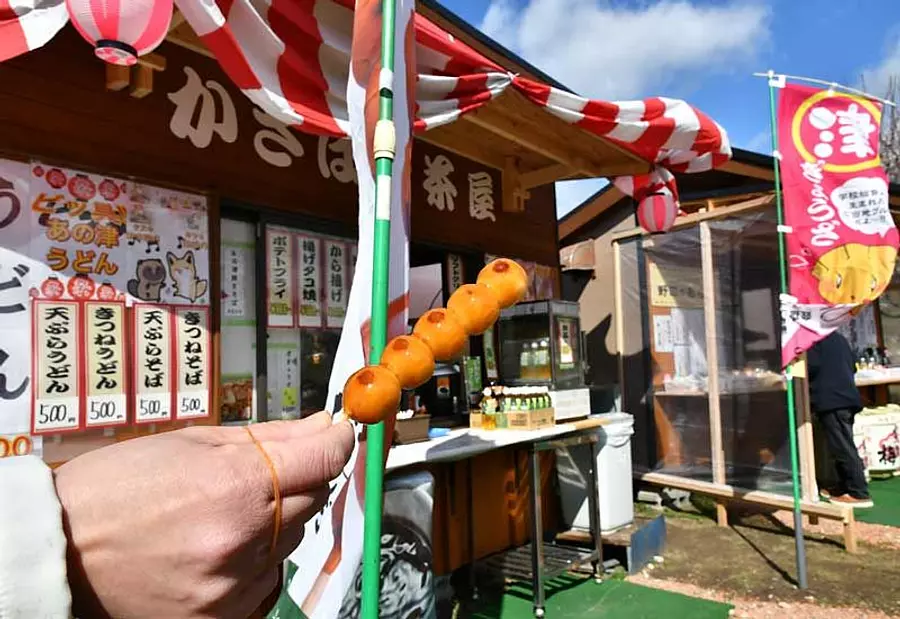
At Kazahaya Chaya, you can enjoy Tsu's local gourmet dishes such as TsuGyoza, Anotsu Yakisoba, and the classic Mitarashi Dango.
There is also a shop in the park where you can purchase famous Tsu souvenirs such as ``Toyoken black curry'', ``T2 chocolate'', ``famous sake Kankobai'', and ``Noda Arare'' (products may change depending on the season). there is).
When the flowers are in full bloom, different food trucks will be opening their stalls every day, so it's a good idea to decide which restaurant you're looking for before you go!
Kazahaya no Sato is a soothing flower spot where you can enjoy plum blossoms from February to March, wisteria from April to May, and hydrangeas from June to July. Among them, the hydrangea garden, which boasts one of the largest scales in the Tokai area, is so beautiful that it takes advantage of the hilly environment, and is said to be ``Japan's most beautiful hydrangea garden,'' so be sure to check it out. Please give it to me.
Enjoy a different world of ``healing flower scenery'' that you cannot see in everyday life as a family of three generations.
*Pets are allowed to enter as long as they follow moral standards. (Check the "Prices" section for details)
Click here for the ``Spectacular Flower Fields and Famous Flower Spots'' feature, which also introduces Kazahaya no Sato.
Kazahaya no Sato, a flower garden that combines welfare and the environment ~Kappa no Furusato~
050-1721-0847
It varies depending on the blooming season of the flowers.
Adults (18 years and over) 100 yen - 1500 yen (highest quality) - 100 yen
Middle-aged (13-17 years old) 0 yen ~ 800 yen (highest beauty) ~ 0 yen
Children (12 and under), people with disabilities (accompanied by able-bodied persons) and pets (dog run use fee applies) are free of charge.
Plum Festival: Early February to late March, 8:00-17:00 (entry deadline)
Wisteria Festival: Late April to early May, 8:00-18:00 (entry deadline)
Hydrangea Festival Part 1 6/1~6/30 8:00~18:30 Admission deadline
Hydrangea Festival Part 2 7/1~7/7 8:00~18:00 Admission deadline
Kosakusakura Festival: Early October to early November, 8:00 to 17:00 (entry deadline)
Open all year round
Parking lot 1: 300 cars, Parking lot 2: 100 cars, West parking lot: 50 cars, Golf course parking lot: 100 cars, Large tourist buses: 10 cars
◆Kintetsu Nagoya Line Hisai Station (express train stop)
○ Free shuttle bus operates from the East Exit... During the Flower Festival, Saturdays, Sundays, and holidays, outbound from 9:00 to 15:00, every 20 minutes, return from 9:20 to 16:40
From the West Exit, take the Mie Kotsu bus to Sakakibara Shako-mae → Get off at Togi Jinja-mae → 15 minutes walk
Outbound 6:30 7:16 46 8:26 9:16 10:16 11:16 12:16 13:16 14:16 15:16 16:16 17:6 36 18:6
Return 8:21 51 9:31 56 10:51 11:46 12:50 13:26 51 14:52 16:5 53 17:30 18:1 42 19:25
◇Taxi Kintetsu Hisai Station West Exit → Kazahaya no Sato ¥2200
◆Ise Expressway
Turn right at Hisai IC → Route 165 → Turn right at Hyakugo Bank/JA Mie Chuo → Kazehaya Danchi → Parking lot
◇From Suzuka
Nakasei Bypass → Family Mart TsuCity Noda Store → Side road → Turn right under the overpass → Prefectural Route 658 → Turn right at the Social Welfare Corporation Shojukai sign → Along Kazehaya Pond → Parking lot
◇From Iga area
Route 165 → Hyakugo Bank/JA Mie Chuo turn left → Kazehaya Danchi → Hisai Kotsu → turn right at the parking lot sign
◇From Ise
Chuse Bypass → Turn left at Takachaya Komorimachi intersection → Route 165 → Turn right at Hyakugo Bank and JA Mie Chuo → Kazehaya Danchi → Hisai Kotsu → Turn right at the parking lot sign
*Navi ☎059-255-3433 Ise Onsen Golf Club



